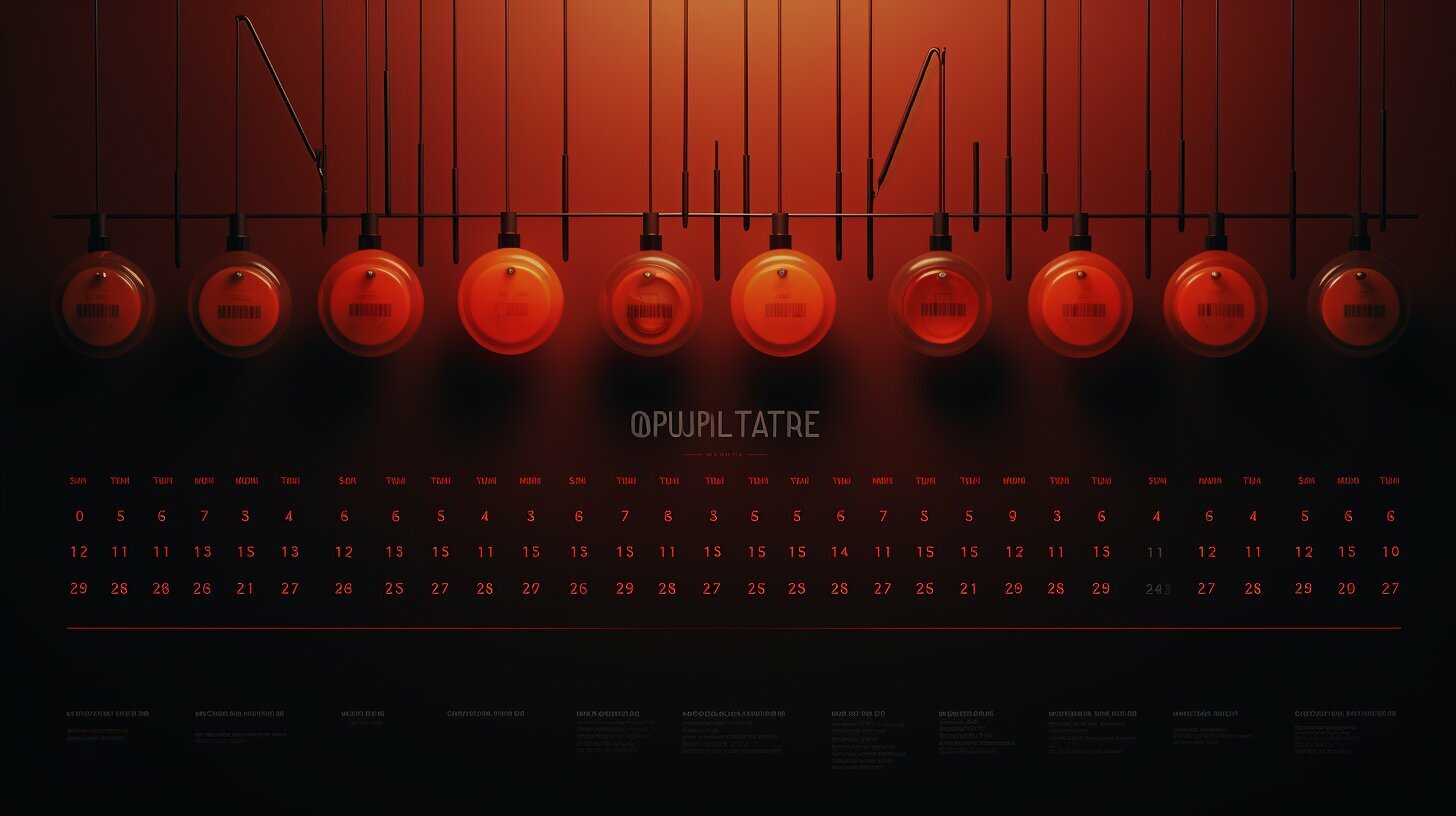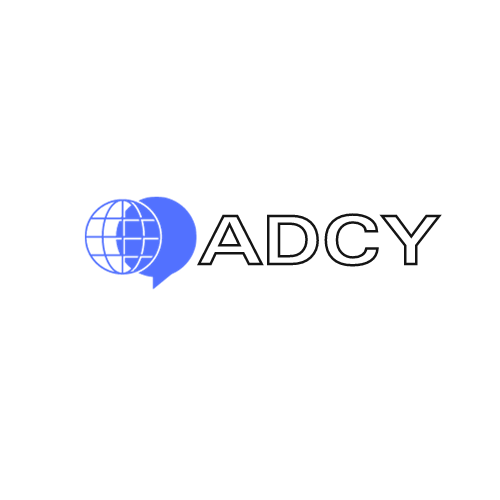Creating an editorial calendar is crucial for content creators to stay organized and meet deadlines. An editorial calendar is a visual workflow that helps plan, schedule, and track content on a daily, weekly, or monthly basis. It provides a framework for blog planning, content scheduling, and overall content calendar management.
When creating an editorial calendar, it’s essential to consider the needs of your team. Questions such as how frequently you publish content, the types of content you create, the number of people using the calendar, and the various stages content goes through before publication need to be answered. This will ensure that the calendar supports your blog’s editorial process effectively.
There are different formats for organizing an editorial calendar, including spreadsheets, content calendars, project management tools, and editorial calendar applications. Choosing the right format depends on the specific requirements and preferences of your team.
The benefits of having an editorial calendar are numerous. It improves content quality and consistency by providing a structured plan for content creation and publication. It also offers more opportunities for innovation and creativity within your content strategy. Additionally, having an editorial calendar supports accountability, streamlines content creation processes, fosters better teamwork, and provides clearer data insights for analysis and improvement.
In this expert guide, we will take you through a step-by-step process to create an effective editorial calendar for your blog. We will cover defining your target audience and content themes, outlining content goals and key performance indicators, choosing the right format for your calendar, designating main marketing channels, assigning roles and responsibilities, analyzing competition’s posting frequency, and determining the optimal publishing frequencies for your blog.
Key Takeaways:
- An editorial calendar is crucial for content creators to stay organized and meet deadlines.
- It helps plan, schedule, and track content on a daily, weekly, or monthly basis.
- Consider your team’s needs when determining the format and structure of your editorial calendar.
- An editorial calendar improves content quality, consistency, and provides more opportunities for innovation.
- Key steps in creating an editorial calendar include defining your target audience, outlining content themes, and assigning roles and responsibilities within your team.
The Purpose of an Editorial Calendar
An editorial calendar is a visual workflow that helps plan, schedule, and track content on a daily, weekly, or monthly basis. It serves as a strategic tool for blog organization and content strategy, ensuring that the right content is published at the right time.
With an editorial calendar, content creators can stay organized, meet deadlines, and maintain a consistent publishing schedule. It provides a clear overview of all planned content, allowing teams to visualize their content pipeline and ensure that there is a balanced mix of topics and formats.
By utilizing an editorial calendar, content teams can also streamline their collaboration and communication processes. It allows team members to assign tasks, set deadlines, and track progress, ensuring that everyone is aligned and accountable for their responsibilities.
The Benefits of an Editorial Calendar
- Improved Content Quality and Consistency: With an editorial calendar, content creators can plan ahead and dedicate sufficient time and resources to produce high-quality content that aligns with their overall content strategy.
- More Opportunities for Innovation: By having a clear overview of their content pipeline, teams can identify gaps and opportunities for new and creative content ideas that resonate with their target audience.
- Enhanced Accountability: An editorial calendar holds team members accountable for their tasks and deadlines, ensuring that content is delivered on time and according to the editorial plan.
- Streamlined Processes: With a centralized calendar, teams can streamline their content creation, editing, and publishing processes, reducing inefficiencies and avoiding last-minute content bottlenecks.
- Better Teamwork and Collaboration: An editorial calendar promotes collaboration and communication within the content team, enabling smoother coordination and fostering a sense of unity towards common goals.
- Improved Data Insights: By consistently tracking and analyzing the performance of published content, teams can gain valuable data insights that inform future content strategy and optimization efforts.
| Key Benefits of an Editorial Calendar |
|---|
| Improved content quality |
| Consistent publishing schedule |
| Enhanced accountability |
| Streamlined collaboration processes |
| Better teamwork and communication |
| Data-driven content optimization |
Determining Your Team’s Needs
To create an effective editorial calendar, it is important to ask yourself several questions to determine the needs of your team. By understanding your team’s requirements, you can tailor your editorial calendar to ensure smooth workflow and efficient content creation and promotion.
First, consider how frequently you publish content on your blog. Is it daily, weekly, or monthly? This will help you determine the level of detail and scheduling required in your editorial calendar. Additionally, think about the types of content you create. Are you producing articles, videos, or podcasts? Different content formats may require different planning and production timelines.
Next, assess the number of people who will be using the editorial calendar. If you have a small team, a simple spreadsheet or content calendar may suffice. However, for larger teams, a project management tool or dedicated editorial calendar application could better serve your needs.
Finally, consider the various stages your content goes through before publication. Do you have an editorial process that involves drafting, editing, and review? Understanding these stages will help you design your editorial calendar to accommodate each step and ensure smooth collaboration among team members.
Determining Your Team’s Needs Table:
| Questions to Ask | Considerations |
|---|---|
| How frequently do you publish content? | Level of detail and scheduling |
| What types of content do you create? | Planning and production timelines |
| How many people will be using the calendar? | Tool or application selection |
| What are the stages of your editorial process? | Collaboration and workflow considerations |
Choosing a Format for Your Editorial Calendar
There are different formats available for organizing an editorial calendar, ranging from traditional spreadsheets to specialized content calendars and project management tools. The choice of format depends on the specific needs and preferences of your content team. Let’s explore some of the popular options:
Spreadsheets
Spreadsheets, such as Microsoft Excel or Google Sheets, are widely used for organizing editorial calendars. They offer a simple and flexible way to manage and visualize your content schedule. With columns representing dates and rows representing different content topics or categories, you can easily track and update your content plans.
Content Calendars
Content calendar tools, like HubSpot or CoSchedule, are designed specifically for managing editorial calendars. These tools often provide enhanced features such as collaboration capabilities, workflow management, and integrations with other marketing platforms. They offer a centralized and streamlined approach to content planning and scheduling.
Project Management Tools
If your content team is already using a project management tool like Trello or Asana, you can leverage its functionalities to create and manage your editorial calendar. These tools allow you to create different boards or projects for each content category, assign tasks to team members, set deadlines, and track progress. This format works well for teams that prefer a more structured and visual approach to content planning.
Regardless of the format you choose, it’s important to consider the needs of your team and the complexity of your content creation process. A well-organized and intuitive editorial calendar format will ensure smooth collaboration, efficient workflow, and timely content delivery.
Benefits of Having an Editorial Calendar
Having an editorial calendar brings numerous benefits to a content team, including improved content quality, consistency, and accountability. By planning and organizing content in advance, teams can ensure that each piece of content meets high standards of quality. With a clear schedule in place, content creators have more time to research, create, and refine their work, resulting in content that resonates with the target audience.
Consistency is key in maintaining an engaged audience. An editorial calendar allows teams to schedule content at regular intervals, ensuring a steady flow of posts that keeps readers coming back for more. Consistent posting also contributes to search engine optimization efforts, as search engines recognize frequent updates and reward websites with higher visibility.
Accountability is another important aspect of having an editorial calendar. With clear deadlines and responsibilities assigned to team members, everyone understands their role in the content creation process. This fosters a sense of ownership and encourages team members to meet deadlines, resulting in a more efficient and productive workflow.
| Benefits of Having an Editorial Calendar | Description |
|---|---|
| Improved Content Quality | Allows for more time in researching and refining content, resulting in higher quality output. |
| Consistency | Maintains a regular posting schedule to engage readers and improve search engine visibility. |
| Accountability | Assigns clear responsibilities and deadlines, fostering a sense of ownership and efficiency. |
| Streamlining Processes | Organizes content creation and publication, reducing time wasted on disorganization. |
| Teamwork | Promotes collaboration and communication among team members for a more cohesive content strategy. |
Streamlining processes is another advantage of using an editorial calendar. By having a clear overview of scheduled content, teams can identify potential bottlenecks in the production process and optimize workflows. This leads to increased productivity and more efficient content creation.
An editorial calendar also fosters better teamwork. By providing a shared visual reference for the entire team, everyone has a clear understanding of the content strategy and can collaborate more effectively. Communication is improved, ensuring that team members are aligned on goals, deadlines, and content themes.
Overall, having an editorial calendar improves the team experience and provides clearer data insights. With a well-organized calendar in place, teams can easily track and analyze the performance of their content, identifying strengths and areas for improvement. This data-driven approach allows teams to make informed decisions and continuously optimize their content strategy for better results.
Creating an Editorial Calendar: Step-by-Step Guide
Creating an editorial calendar involves several key steps that help structure your content strategy and ensure its success. By following these steps, you can effectively plan, organize, and schedule your blog content to meet the needs of your target audience and achieve your content goals.
Step 1: Define Your Target Audience and Content Themes
The first step in creating an editorial calendar is to clearly define your target audience and the content themes that align with their interests and needs. Understanding who your audience is will help you tailor your content to their preferences and deliver value through your blog. Additionally, identifying the content themes that resonate with your audience will guide your content creation process and ensure consistency.
Step 2: Outline Content Goals and Key Performance Indicators
Once you have defined your target audience and content themes, it is important to outline your content goals and set key performance indicators (KPIs) to measure the success of your editorial calendar. Your content goals could include increasing website traffic, engagement metrics, lead generation, or brand awareness. By setting KPIs, you can track and analyze the impact of your content and make data-driven decisions to optimize your strategy.
Step 3: Choose a Format for Organizing the Calendar
There are various formats you can choose from to organize your editorial calendar, depending on your team’s preferences and the complexity of your content production process. Spreadsheets are a common choice for their simplicity and flexibility. Content calendar tools, project management platforms, and dedicated editorial calendar applications are also available for more comprehensive organization and collaboration.
When selecting a format, consider factors such as ease of use, visibility, collaboration features, and integration with other tools you use for content creation and promotion. The goal is to find a format that aligns with your team’s workflow and makes it easy to track, update, and communicate about your content.
Step 4: Designate Main Marketing Channels
As part of your editorial calendar, it is essential to designate the main marketing channels through which you will promote your blog content. This could include social media platforms, email marketing, search engine optimization (SEO), or other channels that align with your audience and content goals. By integrating your marketing channels into your editorial calendar, you can ensure a cohesive and strategic approach to content promotion.
Remember to plan and schedule your promotional efforts alongside your content creation process, allowing ample time for promotion before and after the publication of each piece of content.
Step 5: Assign Roles and Responsibilities
To streamline your content creation process and ensure accountability, it is important to assign clear roles and responsibilities to your team members. This includes roles such as content creation, editing, proofreading, graphic design, SEO optimization, and content promotion. Clearly defining these roles will avoid confusion, prevent bottlenecks, and ensure that everyone understands their responsibilities in contributing to the editorial calendar.
Step 6: Analyze Competition’s Posting Frequency
One aspect of an effective content strategy is analyzing your competition’s posting frequency. By studying how often your competitors publish new content, you can gain insights into the optimal posting frequency for your blog. This analysis will help you stay competitive in your industry and ensure that you are meeting the expectations of your target audience.
Examine the posting patterns of your competitors and take note of any patterns or trends that emerge. Use this information to inform your own content calendar and adjust your publishing frequency accordingly.
Step 7: Determine Publishing Frequencies
When creating your editorial calendar, it is important to determine the publishing frequencies that align with your target audience’s preferences and your team’s capacity. Consider factors such as the amount of content you can consistently produce, the time required for content creation and promotion, and the availability of your team members.
By finding the right balance between quality and quantity, you can ensure that your editorial calendar is realistic and achievable. This will help you maintain a consistent publishing schedule and keep your audience engaged.
Popular Tools for Creating Editorial Calendars
There are several popular tools available to assist you in creating and managing your editorial calendar:
| Tool | Features | Benefits |
|---|---|---|
| Google Workspace | Collaborative editing, real-time updates, integration with other Google tools | Efficient collaboration, easy access, seamless integration |
| Trello | Visual boards, task management, team collaboration | Intuitive interface, flexibility, easy task tracking |
| Airtable | Customizable templates, project management features, real-time collaboration | Adaptability, organization, enhanced project management |
| CoSchedule | Content scheduling, social media integration, analytics | Streamlined workflow, social media optimization, performance tracking |
| WordPress Editorial Calendar plugin | Drag-and-drop interface, content scheduling, editorial features | User-friendly, seamless integration with WordPress, enhanced editorial capabilities |
These tools offer different features and benefits, so it’s important to evaluate them based on your specific needs and preferences. Consider factors like ease of use, the level of customization, integration capabilities, and team collaboration features when choosing the tool that best suits your editorial calendar requirements.
Key Tips for Effective Editorial Calendar Management
To ensure successful management of your editorial calendar, keep the following tips in mind:
- Prioritize goals and targets to align your content strategy with your overall objectives.
- Plan ahead to allow ample time for content creation, editing, and promotion.
- Regularly check the calendar to stay on top of upcoming deadlines and identify any gaps in your content schedule.
- Maintain flexibility to accommodate last-minute changes or opportunities for timely content.
By implementing these tips, you can optimize the efficiency and effectiveness of your editorial calendar, resulting in a well-organized and successful content strategy.
Reviewing and Analyzing the Editorial Calendar’s Effectiveness
Regularly reviewing and analyzing the effectiveness of your editorial calendar is essential for continuous improvement. Use data insights from website analytics, social media metrics, and other relevant sources to evaluate the performance of your content. This analysis will help you identify areas of success and opportunities for optimization.
Monitor key metrics such as website traffic, engagement rates, conversion rates, and social media reach to gain a comprehensive understanding of your content’s impact. By leveraging these insights, you can make data-driven decisions, refine your content strategy, and achieve better results.
Creating an editorial calendar is an ongoing process that involves careful planning, organization, and analysis. By following these steps and best practices, you can effectively manage your content strategy, engage your audience, and achieve your content goals.
Designating Main Marketing Channels
To effectively promote your blog content, it is essential to designate and integrate main marketing channels in your editorial calendar. A well-thought-out marketing strategy can significantly enhance the reach and impact of your blog, attracting a larger audience and driving more traffic to your website. By allocating specific marketing channels within your editorial calendar, you can ensure that your content is being distributed strategically across various platforms, maximizing its visibility and engagement potential.
When determining the main marketing channels for your blog promotion, consider the platforms that are most relevant to your target audience. Social media platforms such as Facebook, Twitter, Instagram, and LinkedIn can be highly effective in reaching and engaging with your audience. Email marketing campaigns can help you directly communicate with your subscribers, delivering your latest blog content right to their inbox. Search engine optimization (SEO) techniques can improve your blog’s visibility in search engine results, increasing organic traffic. By integrating these channels into your editorial calendar, you can streamline your promotional efforts and ensure that each piece of content gets adequate exposure.
Furthermore, it is important to analyze the performance of each marketing channel and adjust your strategy accordingly. Track key metrics such as audience reach, engagement rate, click-through rate, and conversion rate to evaluate the effectiveness of your marketing efforts. This data will provide valuable insights into which channels are generating the most traffic and engagement for your blog content. Use this information to make informed decisions about where to allocate your resources and optimize your promotional activities.
Key Marketing Channels and Their Benefits
| Marketing Channel | Benefits |
|---|---|
| Social Media | Increased brand awareness, targeted audience reach, engagement opportunities |
| Email Marketing | Direct communication with subscribers, personalized content delivery, higher conversion rates |
| Search Engine Optimization (SEO) | Improved organic visibility, higher website traffic, long-term sustainable results |
By designating and integrating main marketing channels into your editorial calendar, you can create a cohesive and effective promotional strategy for your blog content. This strategic approach will help you reach a wider audience, increase engagement, and ultimately achieve your blog’s goals. Remember to regularly review and analyze the effectiveness of your marketing efforts to continuously optimize your promotional activities and stay ahead of the competition.
Assigning Roles and Responsibilities
Assigning clear roles and responsibilities within your content team is crucial for effective collaboration and content creation. By clearly defining each team member’s responsibilities, you can ensure that tasks are completed on time and that everyone is working towards the same goals.
When assigning roles, consider each team member’s strengths and expertise. This will help you allocate tasks that align with their skills, ensuring that the quality of content remains high. Additionally, clearly defining responsibilities will minimize confusion and prevent duplication of work.
To help you organize and assign roles and responsibilities, consider using a table. This will provide a visual representation of each team member’s tasks and deadlines. Here’s an example:
| Role | Responsibilities |
|---|---|
| Content Writer | Research and create engaging blog posts |
| Editor | Edit and proofread content for grammar, spelling, and clarity |
| Graphic Designer | Create visual assets and infographics for blog posts |
| SEO Specialist | Optimize blog posts for search engines |
| Social Media Manager | Promote blog posts on social media platforms |
By clearly defining roles and responsibilities, you can ensure that each team member understands their contributions to the content creation process. This clarity fosters efficient teamwork and allows for a smoother workflow.
Analyzing Competition’s Posting Frequency
Analyzing the posting frequency of your competition is an important step in developing an effective content strategy for your blog. By studying how often your competitors publish new content, you can gain insights into their content strategy and adjust your own publishing frequency accordingly. This analysis helps you stay competitive in your niche and ensures that you are consistently providing fresh and relevant content to your audience.
To begin the analysis, compile a list of your main competitors and visit their blogs or websites. Take note of how frequently they publish new content, whether it’s daily, weekly, or monthly. Pay attention to any patterns or trends in their publishing schedule. Are there certain days or times of the month when they consistently release new content? This information can help you identify the optimal posting frequency for your own blog.
Table 1: Analysis of Competitors’ Posting Frequency
| Competitor | Posting Frequency |
|---|---|
| Competitor 1 | 3 blog posts per week |
| Competitor 2 | 1 blog post every other day |
| Competitor 3 | 1 blog post per month |
Based on your analysis, you can determine whether you need to increase or decrease your own publishing frequency. If your competitors are consistently publishing new content multiple times a week, you may need to ramp up your own efforts to stay competitive. Conversely, if they are only posting once a month, you may have an opportunity to stand out by increasing your own publishing frequency.
Remember that while analyzing competition’s posting frequency is an essential step, it’s also important to consider other factors in your content strategy, such as the quality and relevance of your content, your target audience’s preferences, and your team’s resources. Finding the right balance between quantity and quality is crucial for success in content marketing.
Determining Publishing Frequencies
Determining the publishing frequencies for your blog is crucial for maintaining a consistent content calendar. It ensures that you have a steady flow of content going out to your audience, helping to build engagement and loyalty. The frequency at which you publish new blog posts will depend on several factors, including your target audience’s preferences, your team’s capacity, and your content goals.
To determine the optimal publishing frequencies, start by understanding your target audience. Consider their habits and preferences when it comes to consuming content. Are they accustomed to frequent updates or do they prefer longer, more in-depth pieces? Conducting market research and analyzing your audience’s engagement patterns can provide valuable insights for tailoring your publishing schedule.
Next, evaluate your team’s content creation capacity. Take into account factors such as the number of writers and editors available, their workload, and their ability to consistently produce high-quality content. Remember that maintaining a consistent publishing schedule requires a balance between quantity and quality.
| Factors to Consider for Determining Publishing Frequencies | Examples |
|---|---|
| Target audience preferences | Highly engaged audience that expects daily updates |
| Content creation capacity | Small team with limited resources |
| Content goals | Focus on in-depth, long-form content |
Lastly, align your publishing frequencies with your content goals. If your objective is to provide in-depth, long-form articles, you might opt for a lower publishing frequency. On the other hand, if your goal is to generate a high volume of traffic and engagement, you may choose to publish more frequently. It’s important to strike a balance that allows you to consistently deliver quality content while also meeting your objectives.
By taking into account your target audience’s preferences, your team’s capacity, and your content goals, you can determine the publishing frequencies that work best for your blog. Regularly assess and analyze the impact of your publishing schedule on audience engagement and adjust as necessary to optimize your content calendar.
Popular Tools for Creating Editorial Calendars
There are several popular tools available to create and manage editorial calendars, including Google Workspace, Trello, Airtable, CoSchedule, and the WordPress Editorial Calendar plugin. These tools offer a range of features and functionalities to streamline the content planning and scheduling process.
| Tool | Features |
|---|---|
| Google Workspace | Allows you to create and share calendars, collaborate with team members, set reminders, and integrate with other Google apps. |
| Trello | Provides a visual board layout where you can create cards for each content piece, assign due dates, attach files, and collaborate with team members. |
| Airtable | Offers a flexible and customizable spreadsheet-like interface, allowing you to organize and track your content, assign tasks, and set deadlines. |
| CoSchedule | Provides a comprehensive content marketing calendar, with features such as drag-and-drop functionality, social media integration, and analytics. |
| WordPress Editorial Calendar plugin | Specifically designed for WordPress users, this plugin allows you to manage your editorial calendar directly within your WordPress dashboard. |
When choosing a tool, consider your team’s preferences, budget, and specific requirements. Some teams may prefer the simplicity of spreadsheets, while others may benefit from the collaborative features of project management tools. Experiment with different tools to find the one that best suits your needs.
Choosing the Right Tool for your Team
Before making a decision, think about the key factors that are important to your team. Do you need a tool that provides robust collaboration features or a simpler interface that allows for easy content tracking? Consider the size of your team, their technical expertise, and the level of customization you require. By evaluating these factors, you can choose the tool that aligns with your team’s needs and enhances your content creation and scheduling process.
Key Tips for Effective Editorial Calendar Management
Effective editorial calendar management requires prioritizing goals, planning ahead, and regularly reviewing and adjusting the calendar. By following these key tips, content creators can ensure that their editorial calendar remains a valuable tool for staying organized and meeting deadlines.
Prioritize Goals and Targets
Start by clearly defining your content goals and targets. This will help you align your content strategy with your overall marketing objectives. By prioritizing your goals, you can ensure that your editorial calendar focuses on delivering the right content to the right audience at the right time.
Plan Ahead
Take the time to plan your content in advance. This means identifying key dates, events, and trends that are relevant to your audience and your industry. By planning ahead, you can avoid last-minute content creation and ensure that you have a steady flow of high-quality content throughout the year.
Regularly Check the Calendar and Maintain Flexibility
Make it a habit to regularly check your editorial calendar. This will help you stay on top of upcoming content deadlines and ensure that everything is running smoothly. Additionally, be prepared to adjust your calendar as needed. Flexibility is key in responding to unexpected changes or opportunities that may arise.
Effective editorial calendar management is essential for content creators looking to maximize their productivity and achieve their content goals. By prioritizing goals, planning ahead, regularly checking the calendar, and maintaining flexibility, content creators can ensure that their editorial calendar remains a valuable tool for success.
| Tips for Effective Editorial Calendar Management: |
|---|
| 1. Prioritize goals and targets |
| 2. Plan ahead |
| 3. Regularly check the calendar and maintain flexibility |
Reviewing and Analyzing the Editorial Calendar’s Effectiveness
Regularly reviewing and analyzing your editorial calendar’s effectiveness is key to optimizing your content strategy and achieving desired outcomes. By evaluating the performance of your content plan, you can identify areas for improvement and make data-driven decisions to enhance your blog’s success.
Start by gathering data on key metrics such as website traffic, engagement rates, and conversions. Use tools like Google Analytics to track the performance of individual blog posts and assess their impact on your overall content strategy. Analyzing this data will provide valuable insights into what types of content resonate best with your audience and drive the desired outcomes.
| Metrics to Monitor | Actionable Insights |
|---|---|
| Website Traffic | Identify popular topics and formats that attract the most visitors to your blog. Use this information to inform future content creation. |
| Engagement Rates | Measure the level of interaction with your content, such as comments, social shares, and time spent on page. Identify trends and patterns to optimize engagement. |
| Conversions | Track how many readers take desired actions, such as signing up for a newsletter or making a purchase. Analyze the performance of your content in driving conversions and refine your strategy accordingly. |
Remember, data is only as valuable as the insights you draw from it. Take the time to interpret the data and understand its implications for your content strategy. Look for patterns and trends, and compare your performance against established benchmarks or your competitors’ results.
Implementing Changes Based on Insights
Once you have reviewed and analyzed your editorial calendar’s effectiveness, it’s time to translate the insights into action. Use the data to make informed decisions about your content strategy and refine your plan for future content creation.
- Optimize content: Identify successful content themes and formats and replicate them in future posts. Experiment with different approaches to engage your audience and drive better results.
- Adjust publishing frequency: If your analysis reveals that certain days or times consistently perform better in terms of traffic or engagement, consider adjusting your publishing schedule accordingly.
- Refine targeting: Use the data insights to better understand your target audience’s preferences and interests. Tailor your content to meet their needs and provide value.
By regularly reviewing and analyzing your editorial calendar’s effectiveness, you can ensure that your content strategy remains aligned with your goals and objectives. Embrace the power of data to drive continuous improvement and achieve the desired outcomes for your blog.
Conclusion
Creating and managing an editorial calendar is essential for maintaining consistency and achieving success in your blog content strategy. An editorial calendar provides a visual workflow that enables content creators to plan, schedule, and track their content effectively. By asking important questions to determine your team’s needs, such as content frequency, types of content, and number of users, you can create an editorial calendar that meets your specific requirements.
There are various formats to choose from when organizing your editorial calendar, including spreadsheets, content calendars, project management tools, and editorial calendar applications. Selecting the right format that aligns with your team’s preferences and needs is crucial to ensure seamless collaboration and efficient content creation.
The benefits of having an editorial calendar are numerous. It enhances content quality and consistency by providing a clear roadmap for content creation. It also promotes accountability and streamlines processes, allowing for better teamwork and improved data insights. An editorial calendar supports innovation and ensures that content is published at the right time, reaching your target audience effectively.
To create an effective editorial calendar, define your target audience and content themes, outline specific content goals and key performance indicators, and choose a suitable format for organizing your calendar. Designate main marketing channels, assign roles and responsibilities within your team, and analyze your competition’s posting frequency as part of your content strategy. Determine publishing frequencies that align with your audience’s preferences and your team’s capacity.
Popular tools such as Google Workspace, Trello, Airtable, CoSchedule, and the WordPress Editorial Calendar plugin can assist you in creating and managing your editorial calendar efficiently. Remember to prioritize goals and targets, plan ahead, regularly check the calendar, maintain flexibility, and review and analyze its effectiveness regularly. By implementing these practices, you can ensure that your blog content strategy remains consistent, organized, and successful.
FAQ
Q: Why is creating an editorial calendar important?
A: Creating an editorial calendar is important for content creators to stay organized and meet deadlines.
Q: What is an editorial calendar?
A: An editorial calendar is a visual workflow that helps plan, schedule, and track content on a daily, weekly, or monthly basis.
Q: How do I determine my team’s needs for an editorial calendar?
A: Consider factors such as content frequency, types of content, number of users, and content stages before publication.
Q: What are the different formats for organizing an editorial calendar?
A: Different formats include spreadsheets, content calendars, project management tools, and editorial calendar applications.
Q: What are the benefits of having an editorial calendar?
A: Benefits include improved content quality and consistency, more opportunities for innovation, accountability, streamlined processes, better teamwork, improved data insights.
Q: How do I create an editorial calendar?
A: Define your target audience and content themes, outline content goals and key performance indicators, choose a format, designate main marketing channels, assign roles and responsibilities, study the competition’s posting frequency, determine publishing frequencies.
Q: What are popular tools for creating editorial calendars?
A: Popular tools include Google Workspace, Trello, Airtable, CoSchedule, and the WordPress Editorial Calendar plugin.
Q: What are key tips for effective editorial calendar management?
A: Prioritize goals and targets, plan ahead, regularly check the calendar, maintain flexibility.
Q: How do I review and analyze the effectiveness of an editorial calendar?
A: Regularly review and analyze the calendar’s effectiveness using data insights to improve content strategy.







